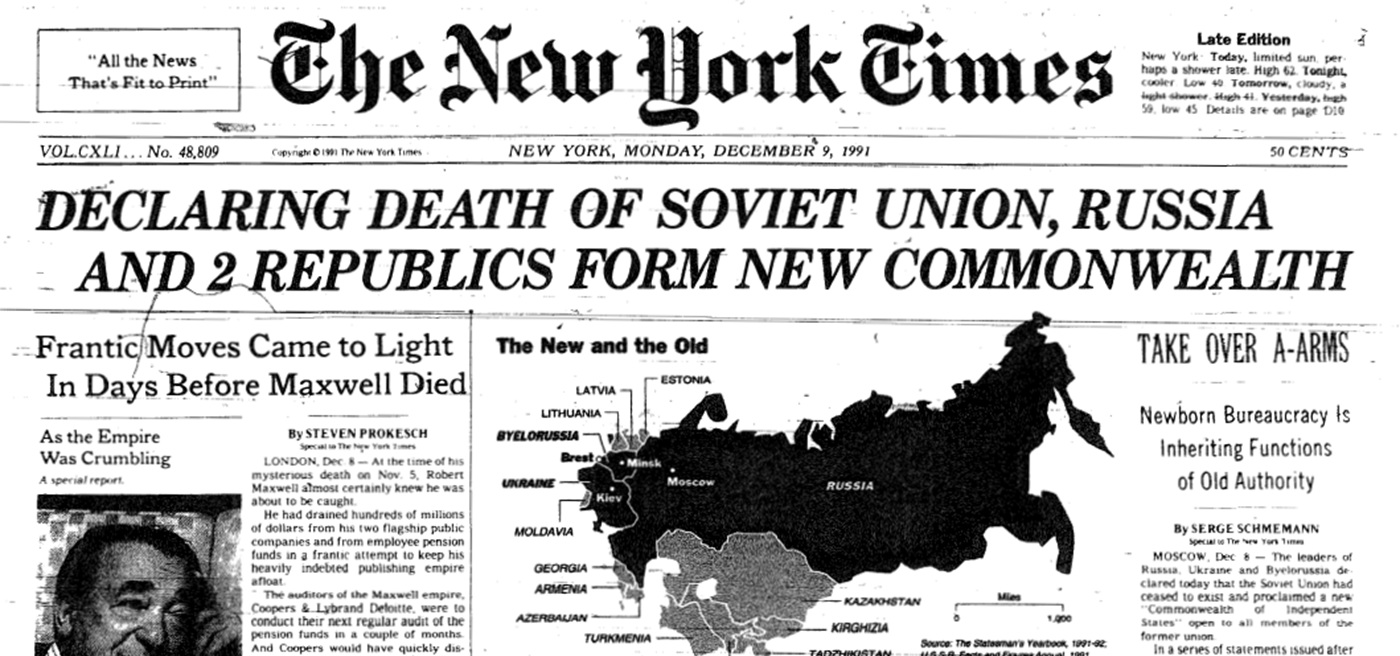
Reflections on the empire before its demise
In the last years of the Soviet Union, a Russian historian took New York Times correspondent David Remnick to the Donskoi Monastery in Moscow, which was used in the 1930s as a burial ground for the thousands regularly killed on Stalin’s orders in the capital of the Red Empire. In his book Lenin’s Tomb: The Last Days of the Soviet Empire (1993), Remnick told what the Russian historian explained:
See this gate? … Well, every night trucks stacked with bodies came back here and dumped them in a heap. They’d already been shot in the back of the head – you bleed less that way … They stacked the bodies in old wooden ammunition crates.
The workers stoked up the underground ovens – right in through the doors – to about twelve thousand degrees centigrade. To make things nice and official they even had professional witnesses who counter-signed the various documents.
When the bodies were burned they were reduced to ash and some chips of bone, maybe some teeth. They then buried the ashes in a pit … When the purges [of the 1930s] were at their peak … the furnaces worked all night and the domes of the churches were covered with ash. There was a fine dust of ash on the snow.
The Kalitnikovsky Cemetery in Moscow also served as a dumping ground for thousands of tortured and executed bodies in the 1930s. That same Russian historian told David Remnick,
In the purges, every dog in town came to this place. That smell you smell now was three times as bad; blood was in the air. People would lean out of their windows and puke all night and the dogs howled until dawn. Sometimes they’d find a dog with an arm or a leg walking through the graveyard.
Enemies of Socialism Sent to Torture in the Mental Ward
The nightmare of the socialist experiment, however, did not end with Stalin’s death in 1953. Its form merely changed in later decades. As head of the KGB in the 1970s, Yuri Andropov (who later was General Secretary of the Communist Party of the Soviet Union after Leonid Brezhnev’s death in 1982), accepted a new theory in Soviet psychiatry which said opposition to the socialist regime was a sign of mental illness.
Why? Because only the mentally disturbed would resist the logic and the truth of Marxian dialectical determinism and its “proof” that socialism and communism were the highest and most humane stage of social development. Those who criticized the system or wanted to reform or overthrow the Soviet socialist regime were mentally sick and required psychiatric treatment.
In his book Russia and the Russians (1984), former Moscow correspondent for the Washington Post Kevin Klose told the story of Alexei Nikitin, a coal mine worker who complained to the Soviet government about the safety and health environment in the mines of the Soviet Union. He was arrested, tried, and found guilty of subversion and committed to a Soviet mental institution.
Various drugs were prescribed as a treatment to bring him to his proper socialist senses. Explained Kevin Klose:
Of all the drugs administered [at the mental institution] to impose discipline, sulfazine stood at the pinnacle of pain … ‘People injected with sulfazine were groaning, sighing with pain, cursing the psychiatrists and Soviet power, cursing with everything in their hearts,’ Alexei told us. ‘The people go into horrible convulsions and get completely disoriented. The body temperature rises to 40 degrees centigrade [104 degrees Fahrenheit] almost instantly, and the pain is so intense they cannot move from their beds for three days. Sulfazine is simply a way to destroy a man completely. If they torture you and break your arms, there is a certain specific pain and you somehow can stand it. But sulfazine is like a drill boring into your body that gets worse and worse until it’s more than you can stand. It’s impossible to endure. It is worse than torture, because, sometimes, torture may end. But this kind of torture may continue for years.’
Sulfazine normally was ‘prescribed’ in a ‘course’ of injections of increasing strength over a period that might last up to two months … The doctors had many other drugs with which to control and punish. Most of them eventually were used on Alexei … At the end of two months, Nikitin was taken off sulfazine but regular doses of … other disorienting drugs continued the entire time he was imprisoned.
The significance of these accounts is not their uniqueness but, rather, their monotonous repetition in every country in which socialism was imposed upon a society. In country after country, death, destruction, and privation followed in the wake of socialism’s triumph. Socialism’s history is an unending story of crushing tyranny and oceans of blood.
Socialism as the Ideology of Death and Destruction